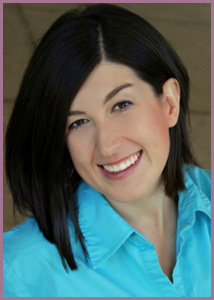Gender-Affirming Vocal Coach, Soprano/Belter, Music/Choir/Vocal Director
Masters of Music Degree in Vocal Pedagogy & Performance, with a concentration in contemporary (popular) vocal techniques
Hypermobile Zebra with Ehlers-Danlos Syndrome, Mast Cell Activation Disorder, Fibromyalgia, Dystonia, and ADHD
- check out my site for all my favorite educational links!

I’m pleased to announce that I’m accepting new students (ages 12+) to my online voice studio! Over the past 20 years, I’m so lucky to have worked with many different types of voices, including: all ages (4-90), all skill levels (true beginners to advanced professionals), and in diverse settings (musical theatre, operas, choirs, bands, kids & teens classes, etc). I’m living my dream career!
I sing and teach most genres: pop, rock (including distortions/rough effects – see the last paragraph below), musical theatre, jazz, R&B, soul, folk, classical & choral. With 2 decades of vocal training & teaching experience, I love helping other vocalists navigate/create their unique sound! We accomplish this by exploring the different parts of their vocal tract, memorizing each particular coordination of their intricate head & neck muscles.
I truly believe that, just like any other instrument, everyone has the ability to learn to sing well. I’ve personally witnessed supposedly “tone deaf” students learn to sing on-pitch and with a pleasant tone quality! As long as you’re willing to devote sufficient time and energy to develop your instrument, I promise to safely guide your exploration of your most resonant, easy-to-project voice.
A truly resonant sound will always be more comfortable to produce, directly resulting in a reduction of your overall physical effort. Matching your different physical sensations in your head and upper body (created via resonance) with your ability to body-map your vocal tract, gives a clearer picture of the many ways you can use your body as a vocalist. This approach will give you plenty of tools to choose from, in what I like to call “your singer’s toolkit.”
Equally important is understanding how the current state of the body can both positively and negatively impact the voice, and how to remedy your specific difficulties. I approach vocal technique in a functional, scientific manner that allows my students to gain results quickly! I’ll help you find your most resonant, easy-to-project voice with the least physical effort, by helping you find your truly resonant sound, which will always be easier to sing, and will therefore be more comfortable overall.
I love helping other singers develop what I like to call their “singer’s toolkit” by matching each vocal technique with its appropriate physical sensation, then pairing those sensations with a thorough understanding of body-mapping (anatomy & physiology for singers). This 3-point approach has proven to be most effective, as it makes it much easier to recreate those same sensations later on while practicing. My overall goal for everyone I work with is for them to truly understand how to troubleshoot their own vocal issues in the future without my help. Of course, there’ll always be vocal emergencies, odd technical issues to sort out, and audition/concert/show prep, so I try to stay available for last-minute technical help or advice on vocal health. I strive to assist my students in achieving their vocal goals, such as: get cast in lead/paid roles for musical theatre shows, maintain their voice for reoccurring 3-hour gigs, prepare for college auditions and choir performances, or just to have fun safely “belting” out your favorite karaoke songs with friends and not experience any strain!